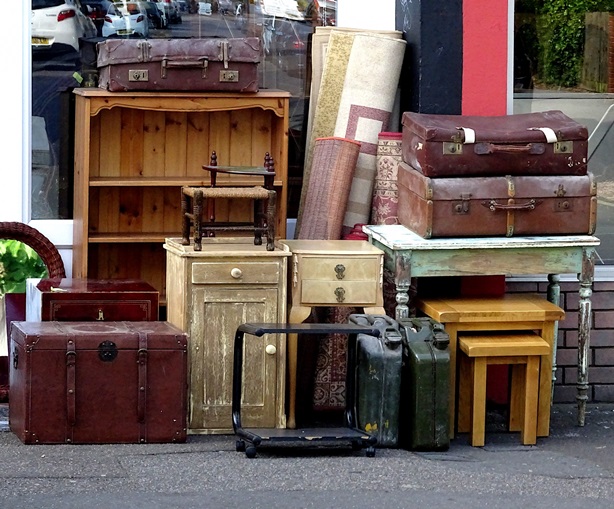How to Dispose of Construction Waste Safely
If you are in the construction industry, you likely deal with a lot of waste. Unfortunately, a lot of it ends up in landfills. Coming up with ways to dispose of construction waste safely is necessary.

Here are a few helpful tips to do so:
1. Recycle, Reuse, and Dispose
Find a way to reuse and recycle as much construction waste as you can. The most common recyclable materials include plastic containers, cardboard, paper, doors, windows, and roofing. If you have material that could be bad for the environment, find ways to get rid of it completely. Landfilling plasterboard, for example, produces hydrogen sulfide and other poisonous gasses.
2. Donate Unwanted Material
If you have any unwanted construction material, consider donating instead of throwing it away. What seems useless to you could be very beneficial to someone else. Old appliances, décor items, and old furniture pieces are fantastic items to donate. Donation is one of the best ways to handle construction waste disposal.
3. Plan Ahead
Planning will save you both time and money. Start planning for waste disposal before the project is complete. Site and construction managers should create disposal plans as soon as possible. An organized and well-planned project leaves minimal room for mistakes during disposal. A good plan needs to account for the following:
- It should identify a correct estimate of the possible waste that could be produced
- Educate the workers on waste management
- Having classifications for composting, recycling, and more at the job site
4. Identify Construction Waste that Is Strictly for Disposal
While recycling is important, you must understand that some wastes need to be disposed of completely. Some construction wastes are impossible to recycle or reuse. If you have toxic or harmful construction wastes, they may be hazardous to your employee’s health and the general public. You would be wise to ensure that no one is exposed to the waste. Here are some construction materials that you need to throw away as soon as possible:
- Carpets
- Untreated particleboard, pallets, and wood
- Masonry and brick blocks
- Materials that may contain lead or mercury
- Bathtubs, sinks, and toilets
- Materials with asbestos
5. Conduct a Site Management Audit
Consider carrying out a site management audit. Without a proper construction site management audit, it may be difficult to dispose of your construction waste correctly. The more control you have over your waste, the less waste you’ll have over time. The proactive approach will ensure that you can meet your waste management audit hierarchy. A proper site management audit covers these factors:
Tips for preventing material from turning into waste
The materials that are most likely to be wasted on your construction site
How different stages of the product are different and their changing needs.
6. Contact Mercury-Collecting Agencies
If you have any mercury-laced waste, you need to seek the help of mercury-collecting agencies. Do not attempt to deal with it on your own. Mercury-laced wastes include neon lamps, smoke detectors, fluorescent lamps, and old paint.
Disposing of construction waste safely calls for preparation and a good strategy. You can apply various practices to promote safety and minimize your carbon footprint. The most appropriate disposal method depends on the type of waste you produce. Instead of letting everything go to landfills, you can do your part in caring for the environment.
Author:
Catherine Park




If you are a local business owner, you know the importance of being visible to potential customers in your area. This is where local SEO comes in – it helps your business rank higher on search engine results pages (SERPs) for location-based queries. But, with so many businesses vying for the top spot, it can be challenging to get noticed. That’s where a digital marketing agency like HTBS can help. In this article, we’ll explore how SEO can benefit your business and how HTBS can help take your business to the top.
I truly appreciate the emphasis on careful planning and responsible waste management in these steps. It’s refreshing to see a commitment to both efficiency and environmental responsibility in construction practices. Planning ahead not only saves valuable time and resources but also reduces our impact on the environment. The clear identification of materials that should be strictly disposed of, especially those that could be harmful, demonstrates a strong commitment to safety and public health. Furthermore, conducting site management audits and collaborating with specialized agencies like mercury-collecting agencies showcases a proactive approach to waste management. It’s heartening to see the construction industry taking steps towards minimizing its carbon footprint and contributing to a more sustainable future. Great advice for responsible construction practices! 🌿🏗️ #SustainabilityInConstruction
Fantastic guide on construction waste disposal! 🌱 The emphasis on recycling, donating, and proper planning shows a commitment to sustainability. The specific tips, like identifying hazardous materials and contacting specialized agencies, make it actionable. Kudos for promoting responsible practices! 👏 #SustainableConstruction